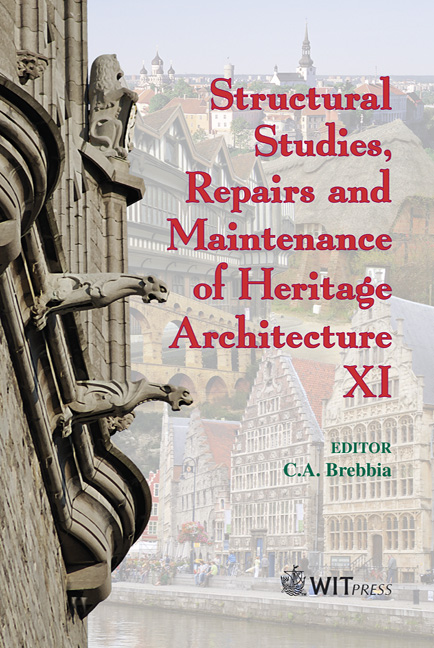Environmental Damage In XXth Century Architecture
Price
Free (open access)
Transaction
Volume
109
Pages
12
Page Range
581 - 592
Published
2009
Size
2,485 kb
Paper DOI
10.2495/STR090511
Copyright
WIT Press
Author(s)
I. Ozga, A. Bonazza, F. Tittarelli, E. Bernardi, O. Favoni, N. Ghedini, L. Morselli & C. Sabbioni
Abstract
It has been recognized that many modern buildings undergo rapid deterioration, especially in areas with high air pollutant concentrations. It is assumed that the deposition of gaseous multi-pollutants and aerosols plays a major role in causing the deterioration of monuments and built cultural heritage in European cities. While the deterioration process due to air pollutants and particle deposition is well studied in stones, particularly limestone, sandstone and granite, in the case of cement materials the subject has yet to be explored. This work focuses on the investigation of the impact of air multipollutants on concrete architecture in current urban atmospheres. The diagnosis of surface layers considering location of buildings is a major issue in this research. To this end laboratory analyses have been preformed on samples from buildings exposed in different urban areas: Centennial Hall of 1913 (Wroclaw, Poland, close to a power station); Chiesa dell’Autostrada del Sole of 1963 (Florence, Italy, close to the motorway) and Casa Galleria Vichi of 1911 (Florence city centre). The samplings were carried out taking into account different levels and parts of the buildings, in washed out, sheltered and partly sheltered areas. The characterization of collected surface layers and cement mortar samples was performed using a range of analytical methods, including optical and scanning electron microscopy, x-ray diffraction, ion chromatography, induced coupled
Keywords
air pollution, cultural heritage, cementitious material, sulfation




